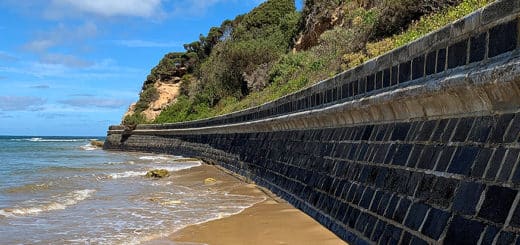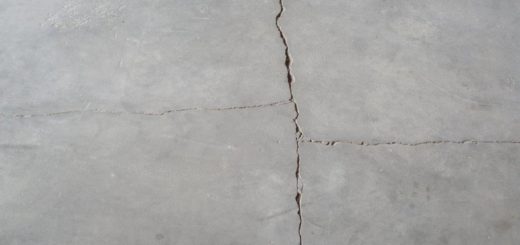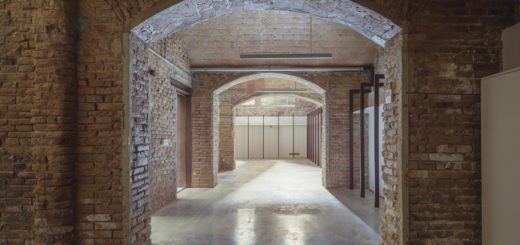Concrete Pouring Steps and Techniques
Key factors to be considered in the concrete pouring are discussed in this article. There are basic steps and procedure needs to be followed in pouring concrete.
We start pouring of concrete after going through the following procedure.
- Preparation
- Forming
- Setting out and Leveling
- Concrete Pouring
- Finishing
- Curing
Preparation
We need to prepare before starting formwork as the final stage. However, part of the work of stage one should be done in the preparation stage. In this state, we can list the following items of work that we need to follow essentially before concreting pouring.
We consider the construction of a concrete slab for this article.
- Firstly it is required to doe some formwork to proceed with the work.
- At the initial stage beam bottom (beam bottom formwork) is placed to start with the reinforcement work.
- Beam setting out is done and then beams are located as per their alignments.
- Levels are marked in the columns to fix the beam bottom formwork.
- Next, we start fixing the beam reinforcements. This can be done in two ways.
- The first method, fixing the reinforcement at the same location in the beam.
- Another method is to fix the beam reinforcement above the beam as it is very easy to work and after completing the fixing of reinforcements, beam reinforcements are lowered to the correct position.
- Similarly, the slab reinforcement fixing can be done after laying slab reinforcements.
- Placing cover blocks are also done with the fixing of reinforcements to maintain the cover to reinforcements.
- During these stages, necessary inspections are done to make sure the reinforcements fixing are correct as per the construction drawing.
- The consultant or the Project Management team will also do the inspection work to check the reinforcements.
Forming
We do fixing formwork in this stage. However, it is required to fix the part of the formwork to proceed with the reinforcements work.
Firstly, we do the setting out work before fixing any formwork. Necessary levels are setting out work are done before starting the formwork.
The leveling machine and total station is used to get the correct levels and to locate the grid lines.
Based on the formwork design props (supports) are fixed at the beam bottom. The spacing of the support shall be as per the formwork design approved by the engineer.
Once the beam reinforcements are fixed, slab forwork is laid.
The spacing of the form supports is as per the approved method statement or the as per the approved formwork drawings. Once the vertical props are fixed, necessary joists are placed before laying the formwork sheets.
Leveling of the formwork is also done before proceeding with the fixing of reinforcements. Further, we need to do several checking before proceeding with the concrete pouring.
The article written as Concrete Column Forms discusses the column formworks and its related aspect in selecting suitable formwork.
In addition, further reading could be made from the wikipedia article Formwork.
Setting out and Leveling
Checking the setting out and leveling are unavoidable steps that shall be followed before proceed with concrete pouring. The accuracy of the work that appeared to the outside will be governed by these steps.
The first stage of the checking is making sure the slab formwork is leveled. The leveling machine is used to check the slab levels. Usually, slab levels are checked from the soft of the formwork.
After checking the reinforcement work, setting out of the reinforcement work is done. In this stage, we mainly check the column setting out as when we do the beam formwork setting out other setting outs are automatially covered.
If the column reinforcement is not aligned with the grid lines or if they are not vertical, then need to be corrected before starting the concrete work.
Then the slab setting out will be done. The offsets marked on the slab formwork used to do either setting out work.
Further reading on setting out of slab shall be done by article Methods of Setting out of Slabs.
After all the checkings are completed we proceed with concrete pouring.
Concrete Pouring
There are are two things we need to discuss under concrete pouring
Basic techniques need to consider and methods of concrete pouring should be considered. Out of those, firstly we discuss key aspects that shall be kept in mind when concrete is poured.
- Concrete Setting Time : It is required to pay attention to the initial and final setting times during the concrete pouring. In general, the initial setting time of concrete is around 45-60 minutes. However, it can be modified by adding admixtures. Setting time can be tested as mention in the article 6 different cement tests. Setting time can be extended as required by the project and as tested during the trial mixtures.
- Formation of Cold Joints : Cold joints are formed when the concrete is poured into the concrete that has started hardening. Therefore, concrete shall be poured before stating the setting. When a large pour is concreting, a new concrete layer will be poured before starting the setting of the existing layer. It avoids the formation of Cold Joints.
- Pouring Pattern : When there is a large concrete pour to be concreted, a pouring pattern is prepared to plan the sequence of concrete pouring. Based on the planned sequence, concrete will be poured to avoid the formation any cold joints.
- Concrete Compaction : It is required to compact the concrete adequately to achive the required quality and strength. Porker vibrator is used to compact the concrete. The period of vibration shall be as per the thickness and type of the mix. Compaction shall be done unitll the entrapped aired is removed and concrete is compacted adequately.
- Self Compacting Concrete : In special occations where it is difficult to do the compaction of concrete manually, the self compacting concrete is used. Self comapaction of the concrete is achieved through the mix design. Deep and large foundations, concreting of piling, etc are done with the self compacting concrete.
- Free Fall Height : Different guidelines provide different ranges. In general, it is 3 to 5 feets. Technically, it is advisable as much as possible to avoid free fall of concrete to avoid seggregation.
- Temperature Control : Depending on the size of the pour, it is required to limit the rise of the temperature and control the variation of temperature at the surface of the concrete. Methods of limiting the rise of the temperature of concrete are discussed in a sperate article.
Finishing
Finishing of concrete work started in different stages. After the concrete is poured, leveling is done. In this stage also, finishing of the concrete can be done.
In addition, the finishing work can be done when the concrete is hardened up to a certain extend that the trowelling machine can lay on the concrete.
Depending on the required finished of the concrete and considering irregularities of the concrete surface, the finishing of the concrete work could be done with plastering.
Curing of Concrete
Curing is one of the most important action that we should attend after concreting is completed.
There are different methods of curing and the curing time of the concrete.
The article 11 methods for curing of concrete could be referred for knowing the curing methods.
Further, the article written as 6 factors affecting curing time of concrete could provide more information to decide the period of curing.
In general, curing is a must process to be followed after concreting as it adds more advantages and safety to the concrete. Therefore, curing shall not be avoided. If we did not cure the concrete, the following main issues will rise.
- Cracking of concrete
- It will affect the durability of the concrete
- Reduction of the strength of the concrete
Concrete Pouring is varying from element to element. Let’s discuss the available methods to pour concrete.
Column Concreting and Wall Concreting
Column concreting is done with the help of the tremie pipe or with the help of a pock make in the column formwork to avoid segregation of concrete with the free fall.
Most commonly, a tremie pipe place inside the column is used to pour the concrete into the column. Porker vibrator is used to compact the concrete after each pour.
Or the pipe of the pump care can be directly inserted into the concrete column where possible.
When concreting is done with the pump car, it shall ensure adequate compaction. Continuous concrete pouring will it make somewhat difficult to compact.
Slab, Beam and Foundation Concrete Pouring
Pouring concrete into the slab is common. It is usual. After the reinforcements work is completed and all the necessary approvals are taken, pouring of concrete can be done.
Concrete can be poured into the slab by using the pump car or manually concrete can be taken into the slab.
Concrete Pouring in Piles
Concreting of piles is different from the other concreting methods. Special methods are used for concrete the piles.
After the excavations are completed, the tremie pipe is inserted into the excavated pile.
Then the flushing is done until the pile is fully cleaned. Necessary tests are done the make sure the cleaning is adequate.
After getting all the approvals for concreting, concrete is filled to the tremie pipe. Then the pipe is lifted slightly allowing the concrete to floor from the bottom. This way it is expected that all the loosen materials move upward with the initial concrete.
Once the flowing of the concrete in the tremie is stoped, again concrete is filled. Tremie will be lifted slightly allowing the concrete flow. When we do this, the end of the tremie pipe will always in the fresh concrete and fresh concrete will not be mixed with the initial concrete or the concrete that has mixed with the bentonite.
This procedure can be followed until the pile concreting is completed. Tremie pipe shall not lift beyond the fresh concrete due to any issue.
In addition, the rate of flowing of concrete shall be controlled to avoid the lifting of the reinforcement cage. If the rate of flowing of concrete is high, the reinforcement cage will be lifted and it can not be lowered thereafter. Therefore, special attention shall be made in this regard.









